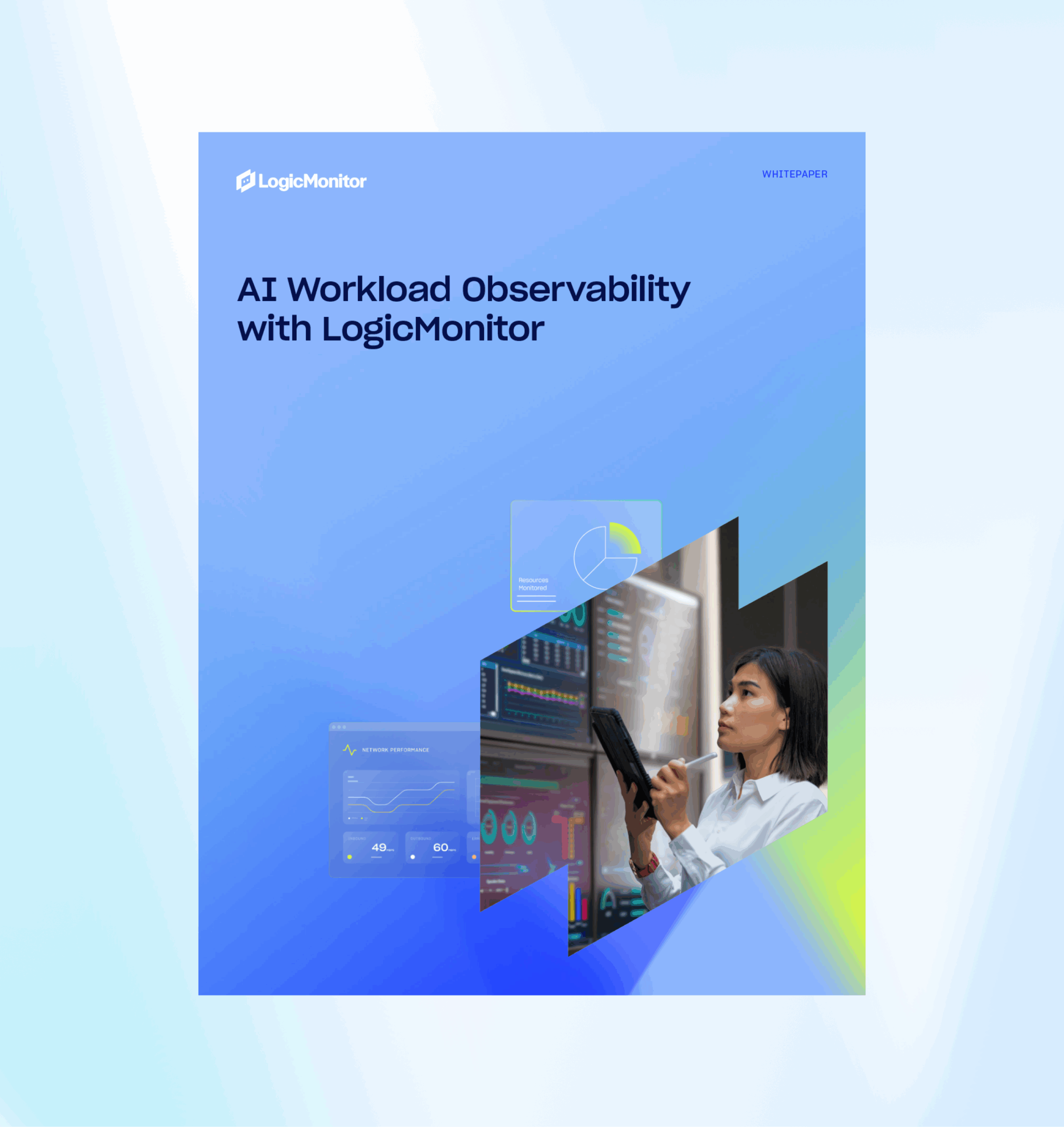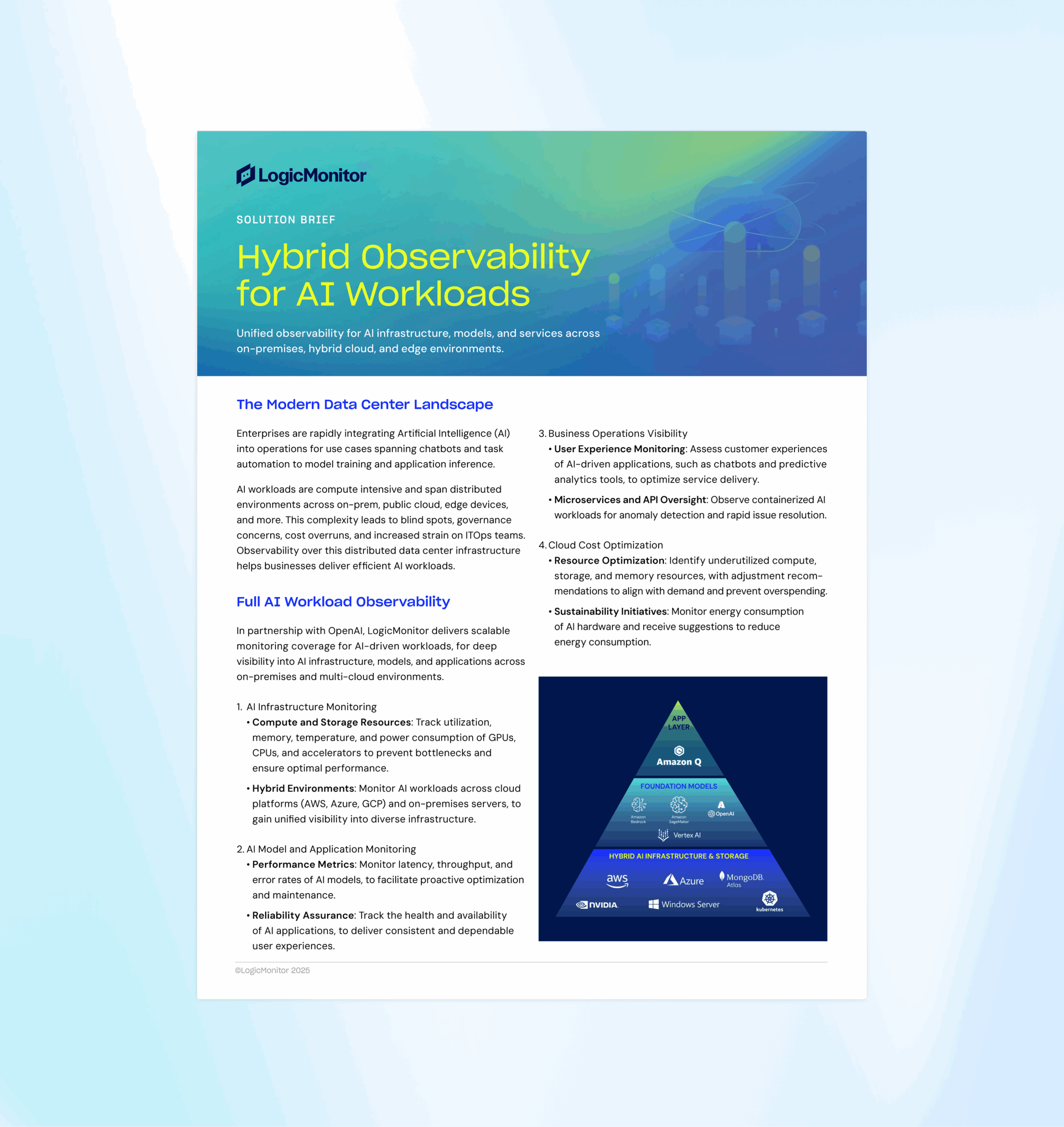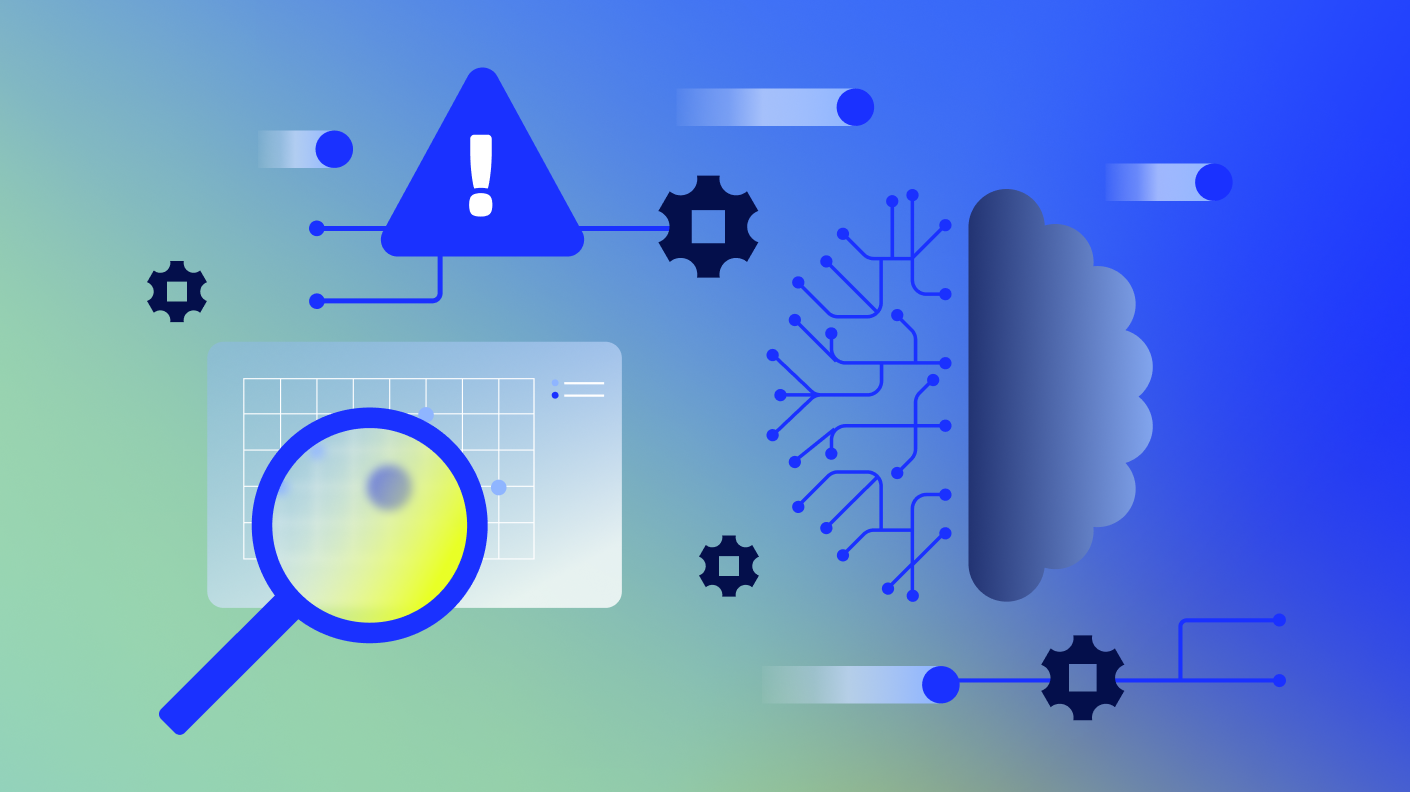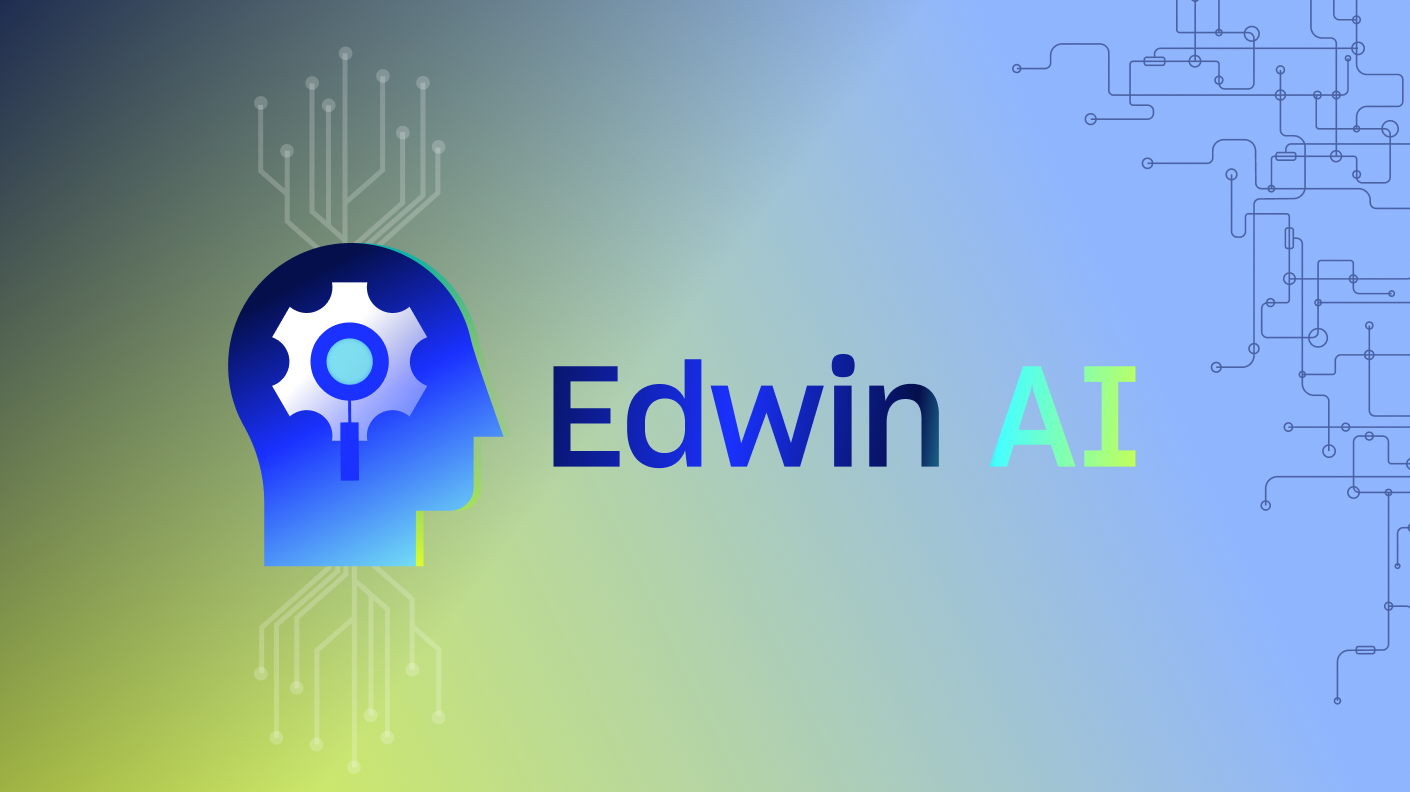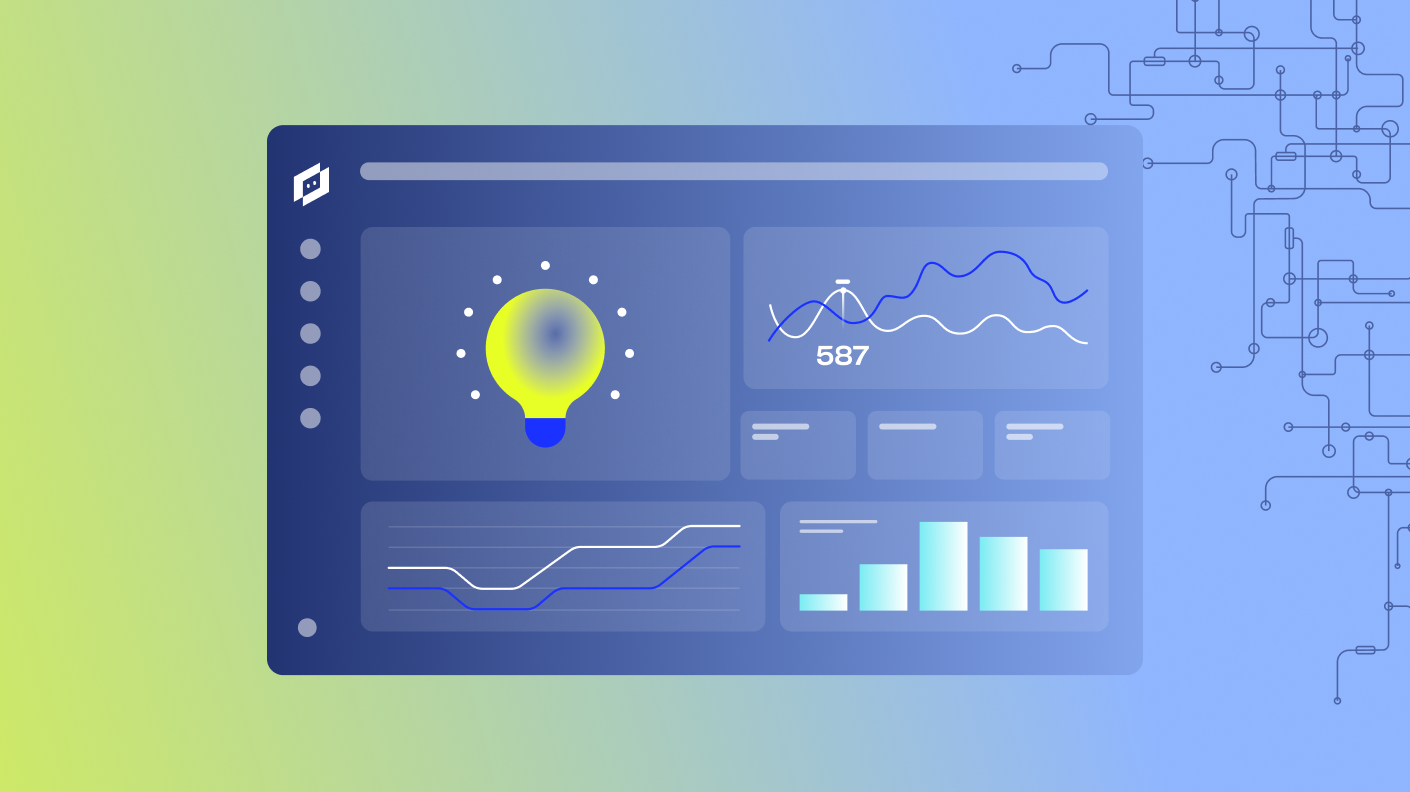“Today, I wanna take us on a little journey because this is the most exciting time that we are so lucky to be alive. I tell all of our employees at LogicMonitor that almost every single time I talk to them. How lucky are we? We are in this incredible AI revolution. It’s like nothing we’ve ever seen before.
The scale, the speed, the transformation, we’ve never seen this in the history of technology, and we are at the epicenter of it. We are so, so lucky, and this is so exciting for us. So I wanna take us on a little journey, and I’m gonna date myself and I think probably some of us in the room, around how this technology has evolved over time and how that puts us in this position we are here with with AI.
So we started out in the mainframe era. Remember this this era?
Right? This is the first time computers and technology were starting to to integrate with the business world, and this required infrastructure to support it. Yes. AI existed back in the mainframe era. You had our machine learning techniques that were part of it.
We then started into this client server era, and the Internet was coming around.
And the idea of a client and a server connected to networks, machines talking with each other, accessing remote resources.
This required a new shift in IT, a new shift in delivery, new shift in the architecture.
I remember early in my career spending time, installing software on everyone’s laptop. That took hours. I spent like, my entire job was just taking all these laptops and installing software on it.
And then we had virtualization, which was the next major breakthrough.
And now we have further abstracted applications, resources, and actions from the physical hardware to the infrastructure. And so now we have more distribution, more reliance on services.
And then we have the cloud. And this was my favorite era before the era we’re in now. I started at Salesforce in two thousand two. It was at the very beginning. Cloud computing wasn’t a thing.
Customers were unbelievably skeptical.
It was completely flipping technology on its head.
How many of you remember Sassy?
Sky, like, walked all around, the city, all the conferences at Salesforce, you know, with the big white gloves, the no software logo.
It was bold. It was crazy. But this was a major transformation, and I remember I spent countless years and hours with everyone saying this won’t work.
This is hard.
It was a huge transformation.
And the way software was delivered, the infrastructure that was required, the way software companies had to work and interact with their customers to really focus on adoption, customer success, providing value.
But now we’re in this new era, this new AI era, the modern data center. What is the modern data center? It’s bringing everything together. It’s bringing all those eras from mainframe to client servers to virtualization to SaaS cloud computing.
And it’s layering all of that into one area, so now things are very complicated.
The infrastructure that’s required, it demands scalability.
It demands speed.
It demands agility.
It demands major resources and power.
And this is the AI generated modern data center. Is this what your all your data centers look like?
Alright.
So what does this mean if we dig in this below the surface here?
There’s a twenty two percent demand for data center growth.
I spent the first part of this year I was really fortunate to be in Davos. I went to a bunch of different conferences. I’ve been out talking to many of you. What’s the number one thing people are talking about?
Everywhere, every part of the world, in every industry sector, they’re talking about AI.
And they’re saying, AI is going to this is the most important revolution we’ve ever had in the history of technology, in the history probably even of mankind right now. This is gonna change our lives like nothing we’ve seen before. And, again, the speed and pace at which this technology is moving, the scale at which we’re we’re coming in, the complexity that’s required.
It’s like nothing we’ve ever seen before.
And the question that gets asked consistently is, how do we fuel this innovation?
How do we afford it? How do we pay for it? Because this is money like we have not seen before.
Do you see Stargate was announced five hundred billion dollars I mean, this is just, we’re talking money that, like, we can’t even comprehend.
Where do we build these data centers?
Where’s the real estate? How do we get the energy? What’s our sustainability impact on this?
This is all concerns that every part of the world is trying to come together to solve, and this demand is just continually increasing.
Ninety plus percent of organizations are gonna, deploy hybrid cloud. Even those companies that were one hundred percent born in the cloud, cloud native, they’re saying, you know what?
I have got to afford this this revolution. Not all workloads are treated the same. How do I think about my data center strategy so that I can optimize for performance, for innovation, for cost, and for sustainability? And how do I think about that? So the world is hybrid, and it is hybrid is here to stay.
And the demand for AI tools is increasing at thirty three percent CAGR.
This pace is so high. I’m sure all of you in your organizations, it’s all you’re talking about, and you’re looking at how can we get more AI in our company. So not only are we building AI in our products, we talk about it consistently at LogicMonitor. How do we deploy more AI in our workflows and our operations so that we can move faster, so we can elevate, so that we can service all of you more effectively?
So what does this mean for the enterprise?
Enterprises are getting more complex. We’re bringing all those eras we just talked about together. These environments are spanning legacy systems, cloud, IoT. We have a lot of medical health care customers here in the audience.
And, you know, I hear these stories around the need for connection to, surgical centers, to CAT scan machines, to drugs that some of our customers are producing.
Every room, everywhere we go are these mini data centers. We’re connecting to at least ten devices in a room.
So systems are deeply integrated. Downtime is critical.
These are not just operations. We’re talking about lives are at stake here.
So this modern data center has to blend agility with enterprise controls, and you must handle these traditional workloads with the cloud native.
And then you you need automation on that too.
So how do you think about, one, you know, ensuring the uptime of this performance, but two, acting intelligently and interpreting and correlating that data, and three, taking actions on it.
And that’s where logic monitor comes in.
We’re not just monitoring or observing.
We are highly intelligent.
We’re highly intelligent because we ingest over one point five trillion metrics a day in addition to all the metadata.
So we’re able to correlate all of that and bring that into intelligence for all of you, intelligence around how do you fuel this this data center this AI revolution?
How do you ensure that it stays up and running so that your mission critical operations are always on?
How do you ensure that you can afford this, that you’re looking through your workloads and you’re understanding where they’re best served on that performance and cost impact?
How do you ensure this is sustainable?
How do you ensure that we can continue to build the energy supplies for all of this. We’re bringing that all together in a single pane of glass, and we’re doing that with this agentless architecture, which allows you to move fast and the maintenance and the footprint is so much lower. So as your environments are continually getting more complex, logic monitor is not. It’s just handling that seamlessly for you.
So, again, let’s put the scale back on here. Global data center investments is expected to reach one point eight trillion dollars by twenty thirty. One point eight trillion dollars. Like, this is we we can’t our minds are blown. We can’t even comprehend the dollars that are required here.
Data centers are the backbone of AI, and all of you in this room are focused on that. How do you make these data centers most successful? That’s where we’re focused on.
That’s the entire GDP of Italy, by the way.
So I say our bread and butter is monitoring data centers. Data centers are cool again. It’s all everyone’s talking about. President Trump’s talking about data centers.
Everyone in the world’s talking about data centers. So first and foremost, we wanna keep you all up and running.
But that’s not enough. It’s not enough just to keep your performance.
How do you connect your performance to your business outcomes? How do we connect those to your strategic initiatives?
Because all of you in the room, your jobs are changing.
What you’re being asked to do is not just keep the data centers up and running, not just keep your infrastructure up and running, but connect that to your businesses.
How do you manage all of this?
It’s a full time job of several people, hundreds of people. Many of you tell me you have hundreds of people on yours.
How do you balance all of this that’s coming at you, where you have to fuel the innovation? Your business is saying, we have to do this. We have to go faster. Oh, but you know what? We’re not gonna give you any more resources.
Is that true for for a lot of you?
Many of you were leaving dinner last night saying, I I gotta go back and work. And I’m like, I really hope LogicMonitor can help you with that so we can stay at dinner longer. Right?
So this convergence of all of this is leading to this new agentic AI era, IT powered operations.
And so this brings together observability, AIOps, generative AI, and all of this unstructured data into AgenTek AI and Edwin.
Edwin is your agent, and Edwin does all of this, brings it all together.
So Edwin is your real time teammate who doesn’t sleep, who can work all night for you so you can stay out having some drinks.
The results are real.
Our customers we just launched Edwin eight months ago, and across all of our customers, we’re seeing on average forty five hours a week.
Forty five hours a week are are saved. What could all of you do with forty five extra hours in your week?
So we asked Chris Manning at Sanjenta.
What would he do?
What would you do with all this extra time?
He said, with just one hour back, he would take time to take a breath, relax, think strategically, Think how does this impact your business, not just in reaction mode.
He also likes to ride motorbikes, fly drones.
With Edwin, you can do that.
Tapestry. We asked Pedro, Pedro, what would you do with an extra hour a week? Just one extra hour a week. Think with forty five extra hours a week. Pedro said, I would like to work out.
How often can we not get our workouts in?
McKesson.
Save forty five hours a week on average. And if we have Andrea in the room Sarah, there you go. Right right front and center.
We’ve got real life Andrea, but we’ve also got our action figure here. She said with one hour back, she’d harass her kids, or she’d actually build an AI agent because agents are the future.
So to close, these aren’t just success stories.
They’re proof that LogicMonitor is transforming industries, transforming companies by delivering the outcomes that matter. We are literally saving lives.
We’re allowing all of you to get that workout in.
Take a breath.
Just take a breath. Stay late at dinner because we’re gonna work twenty four seven for you.
We don’t sleep. Edwin doesn’t take vacations.
And we’re at just the beginning.
This is so exciting.
We know that data centers are fueling this AI revolution.
AI needs data centers, but data centers cannot exist without LogicMonitor.
You cannot have AI. You cannot manage data centers without LogicMonitor.
So thank you again for being here today. I’m excited for you all, to hear from all of our different product folks and see this in action and connect with each other.”


